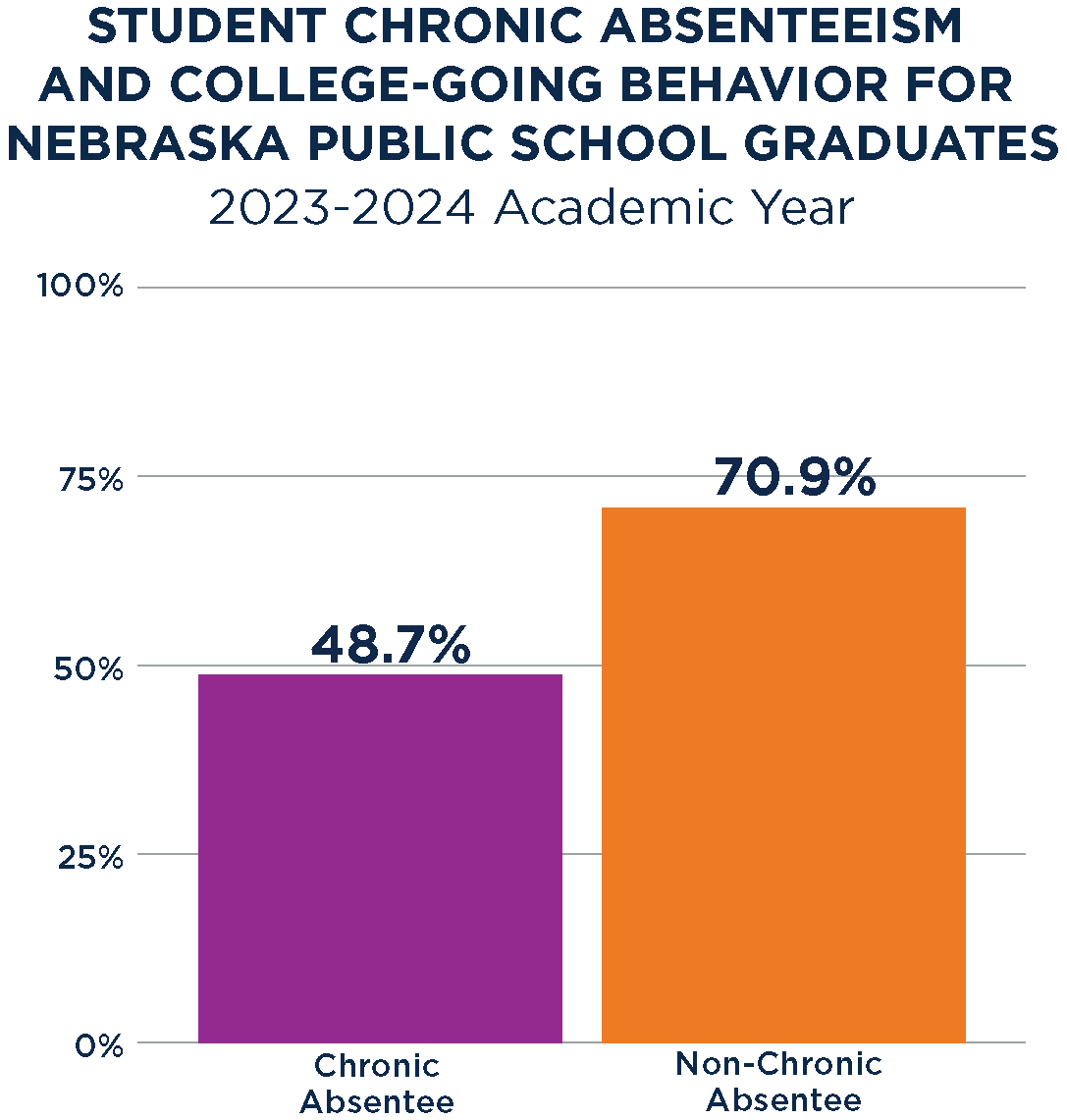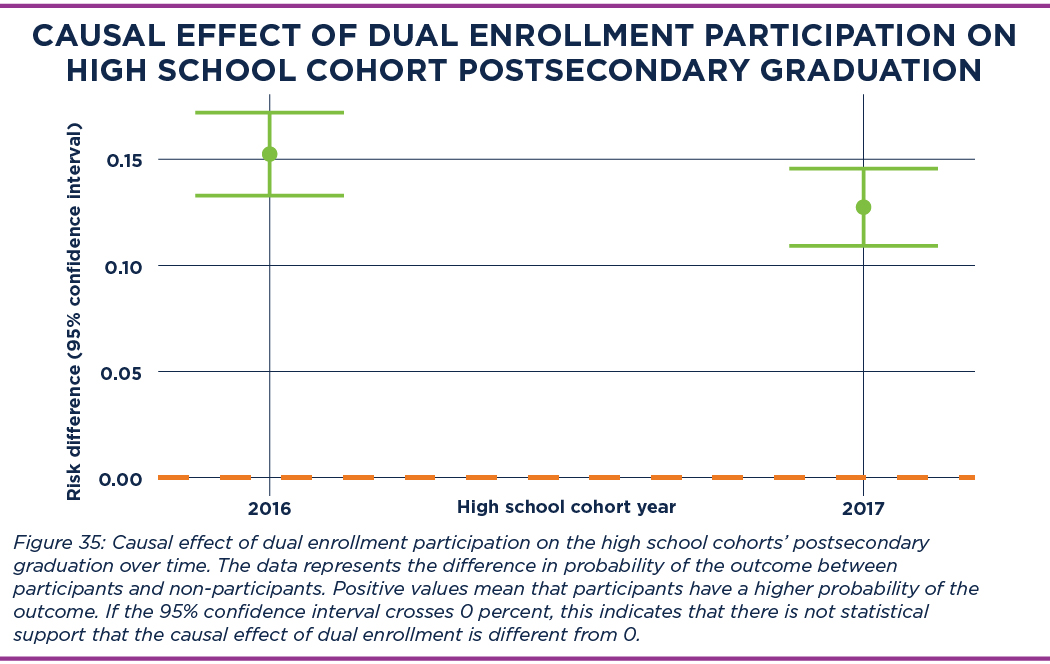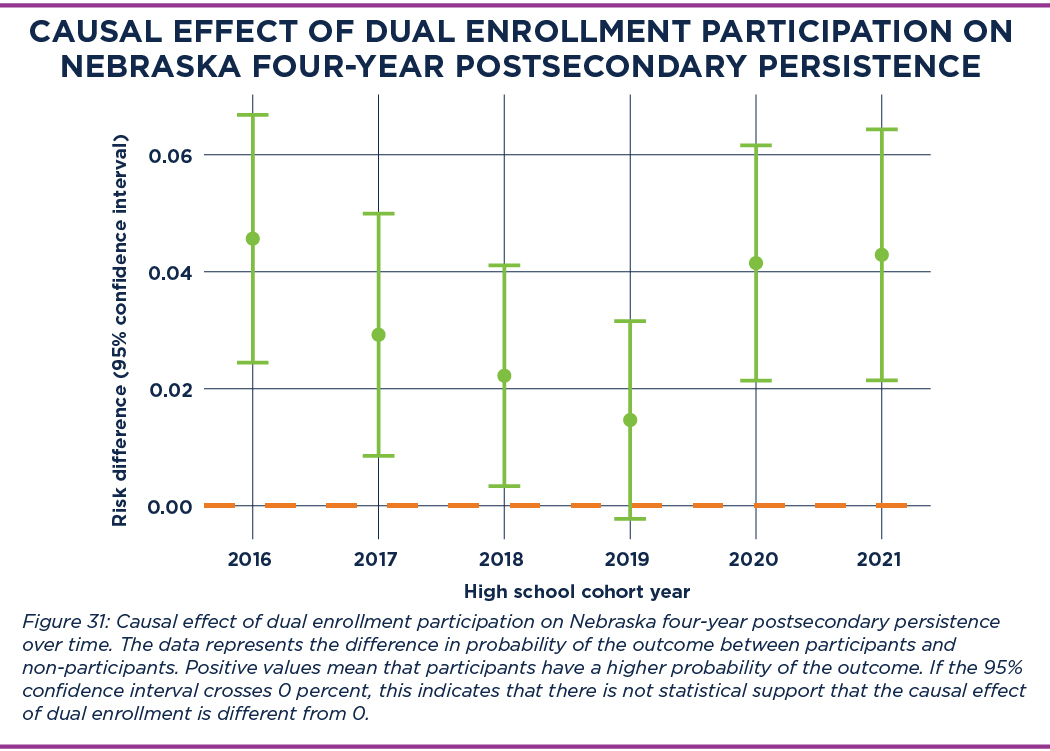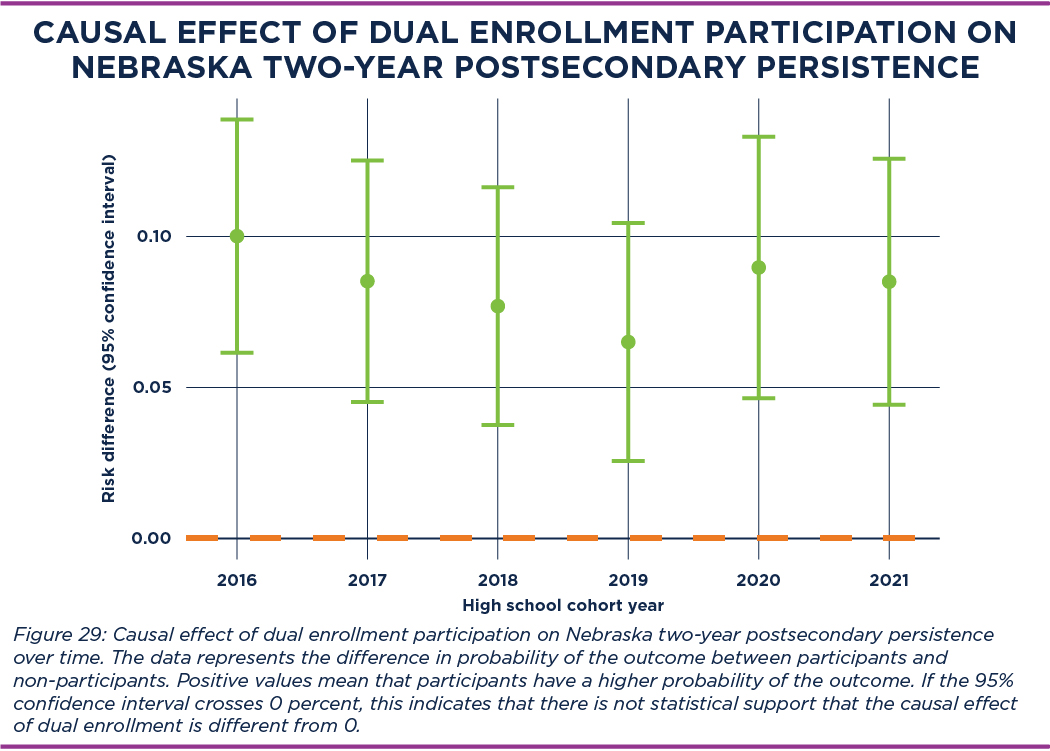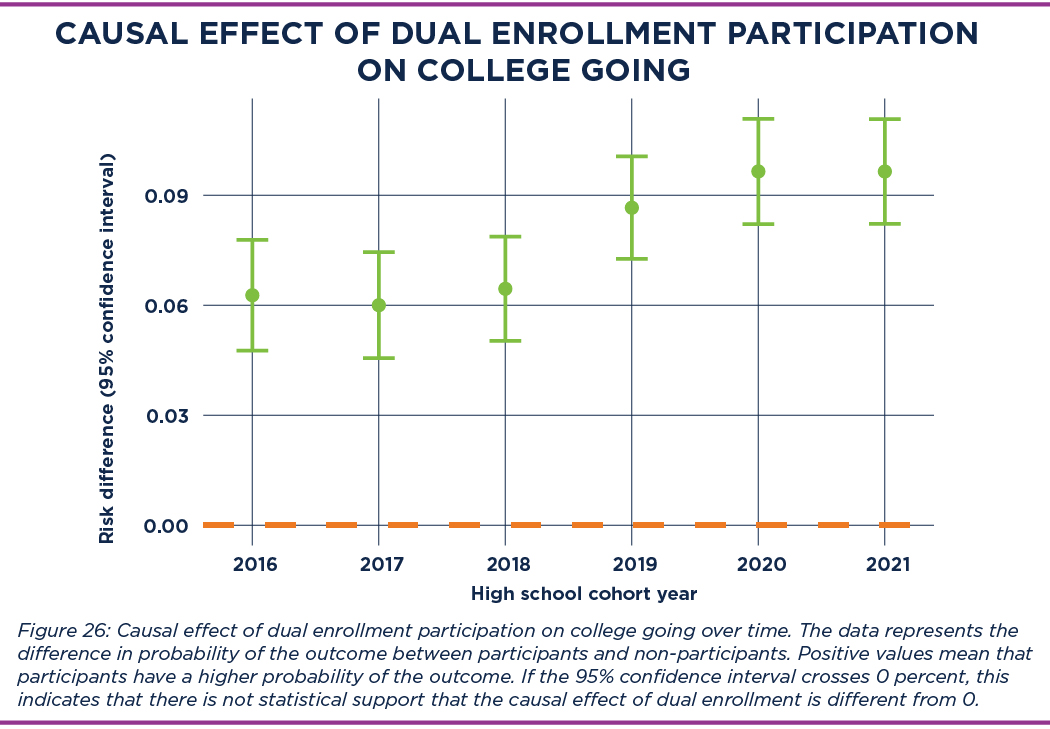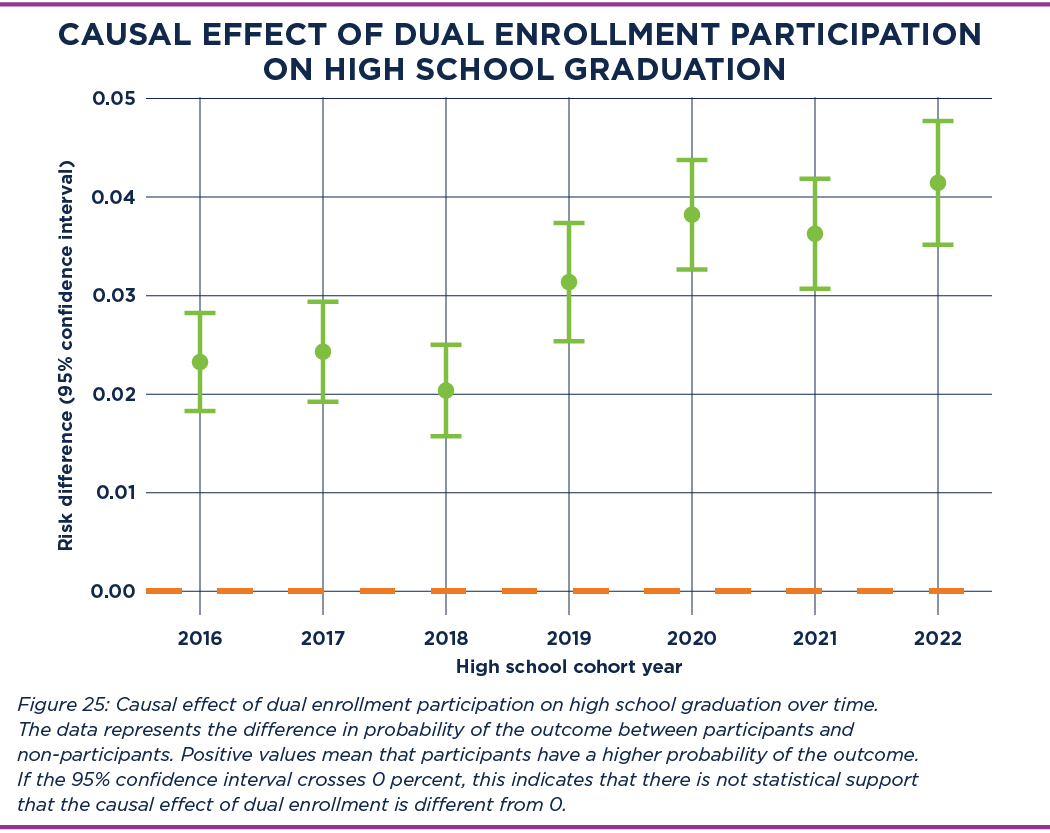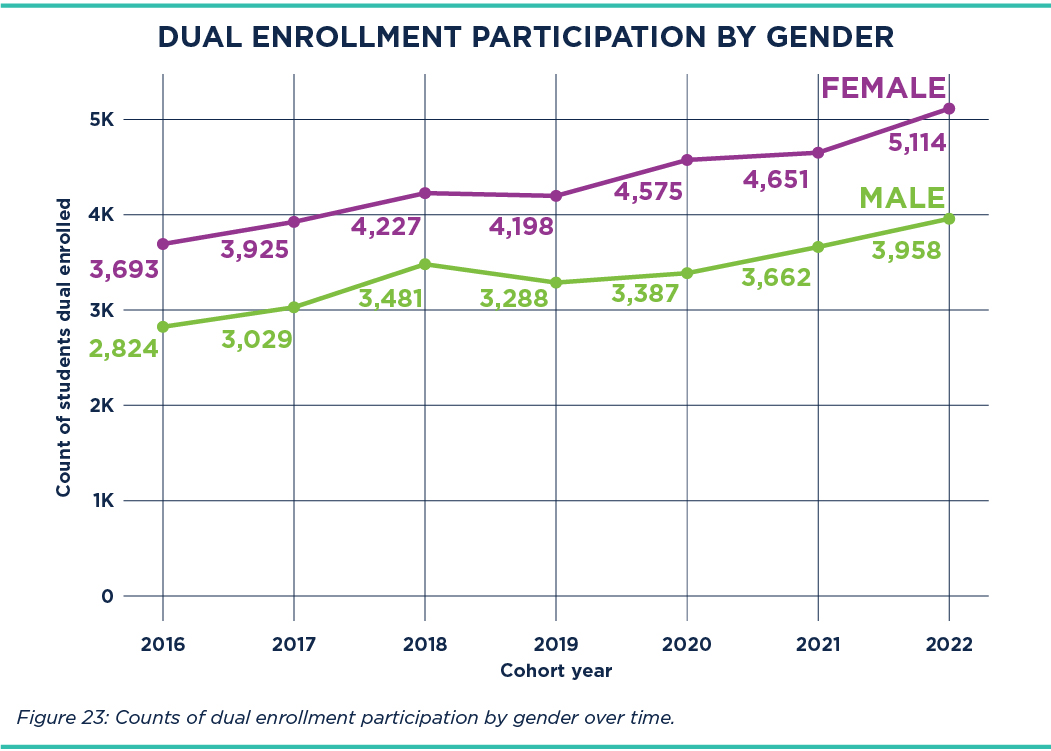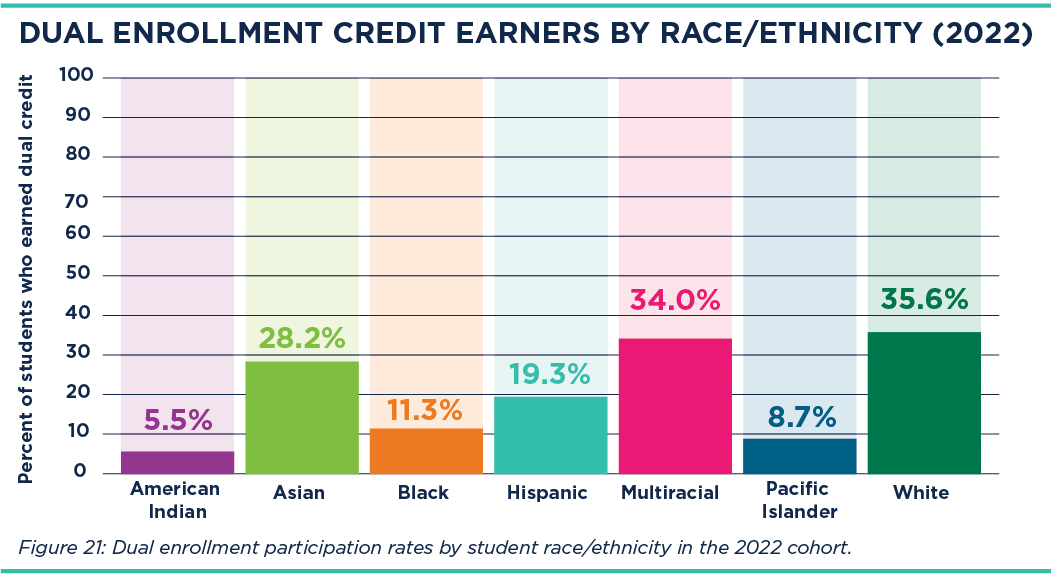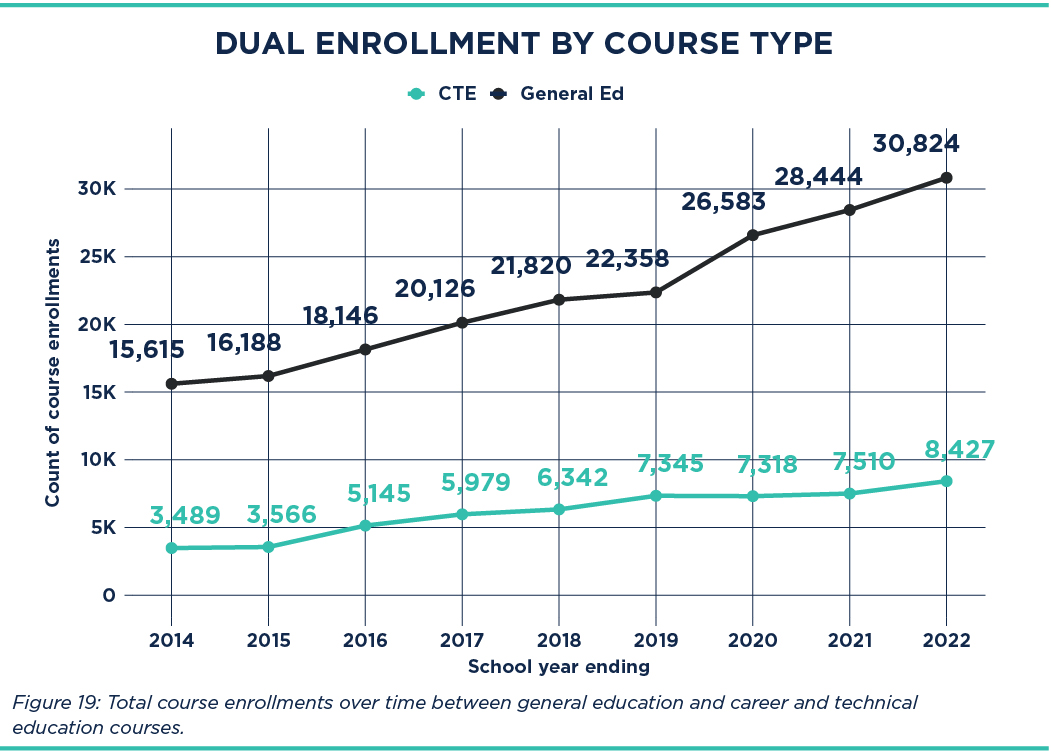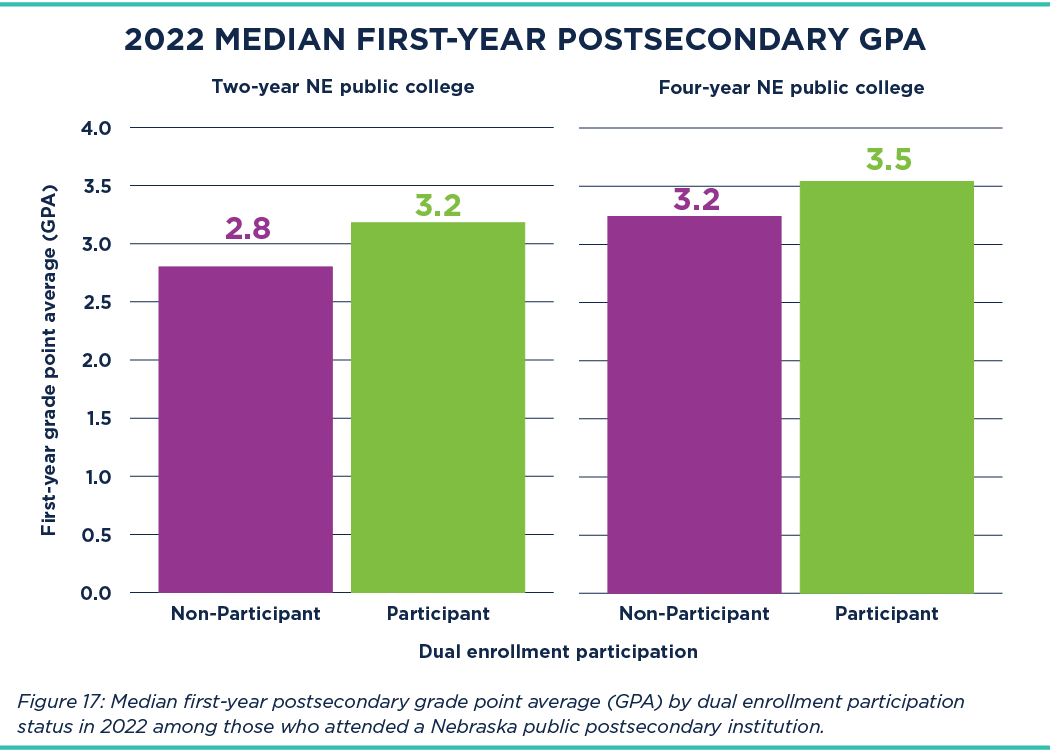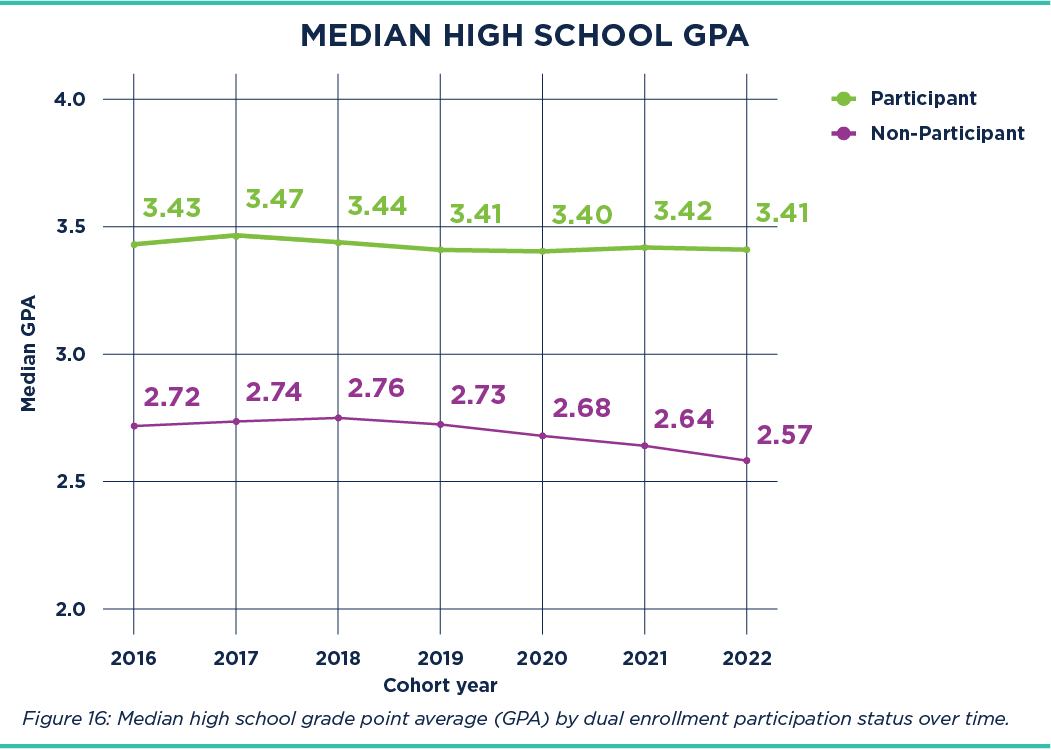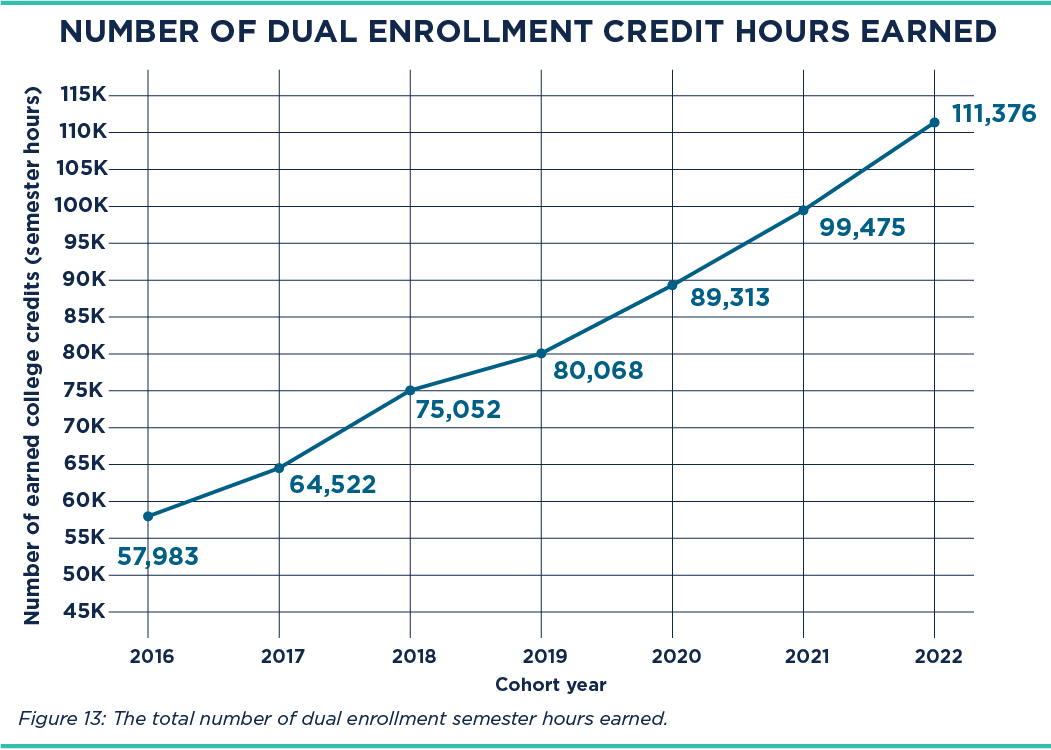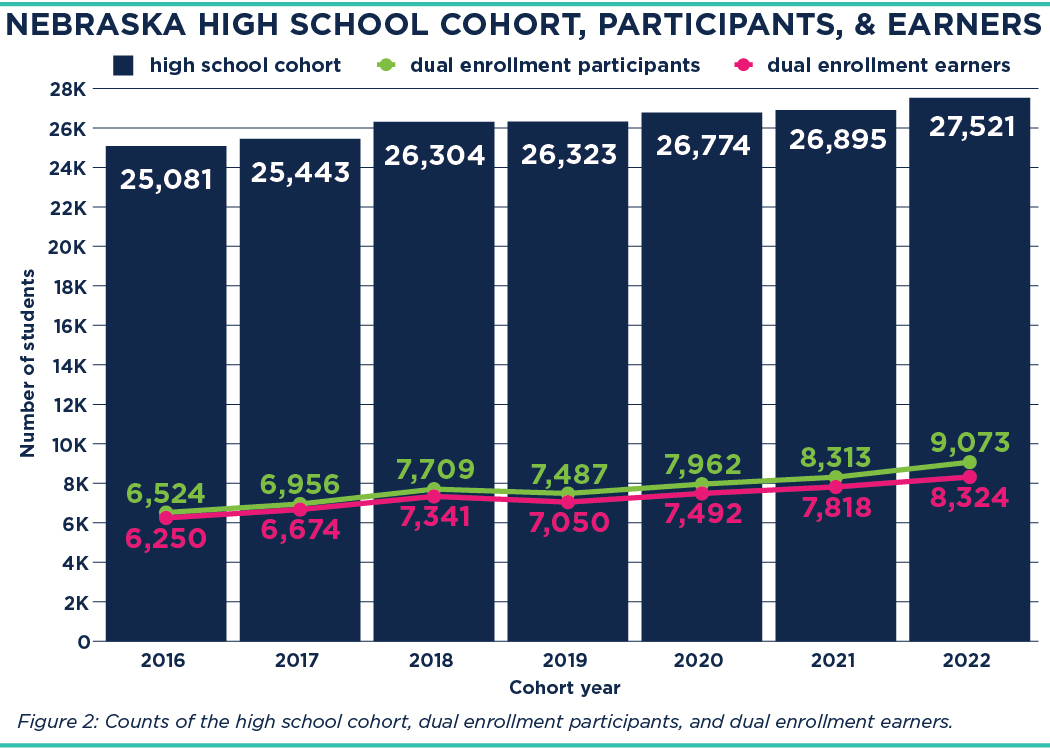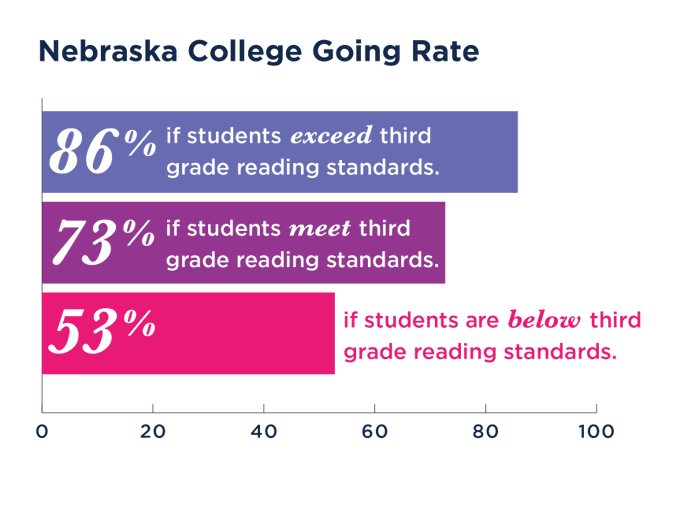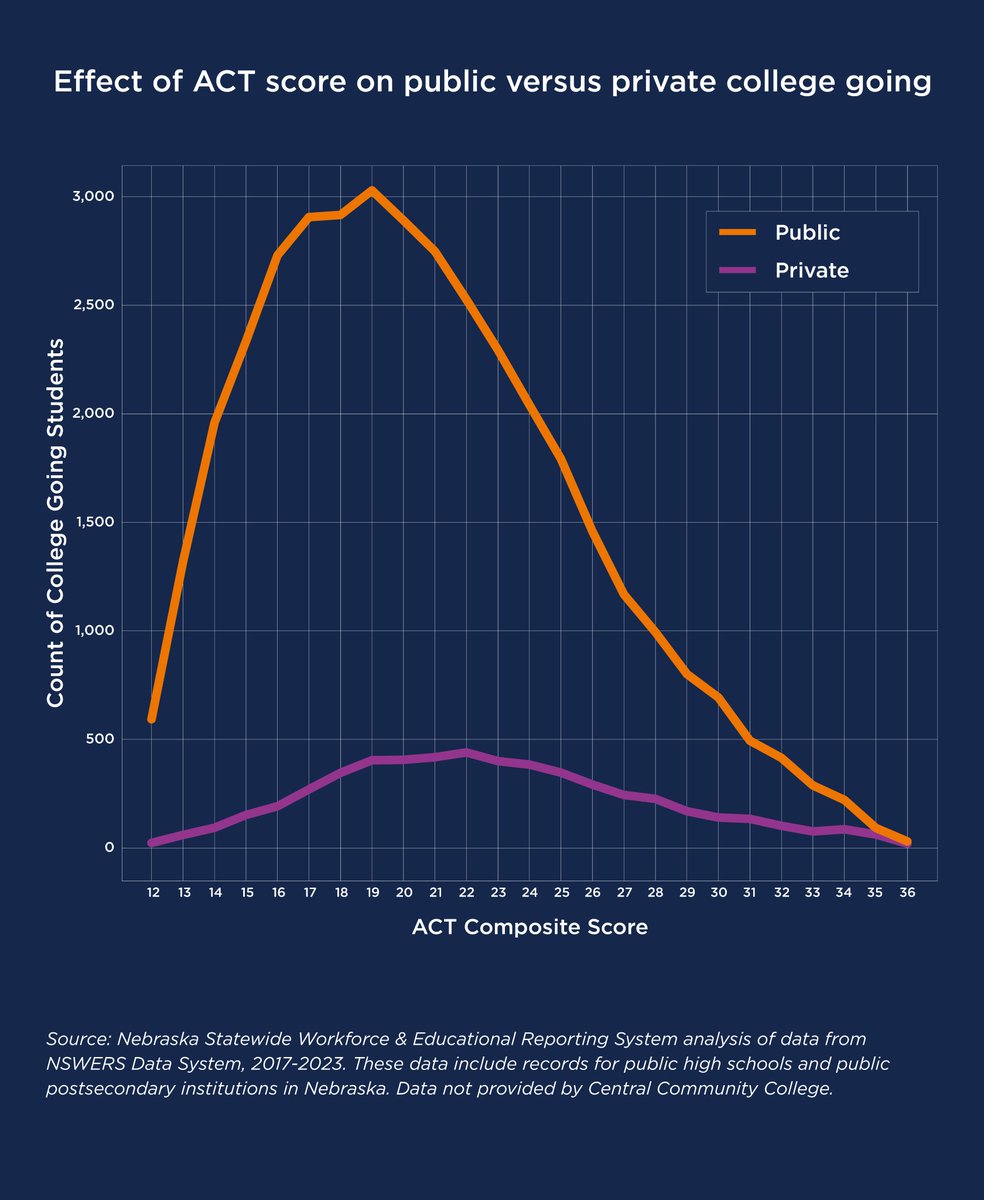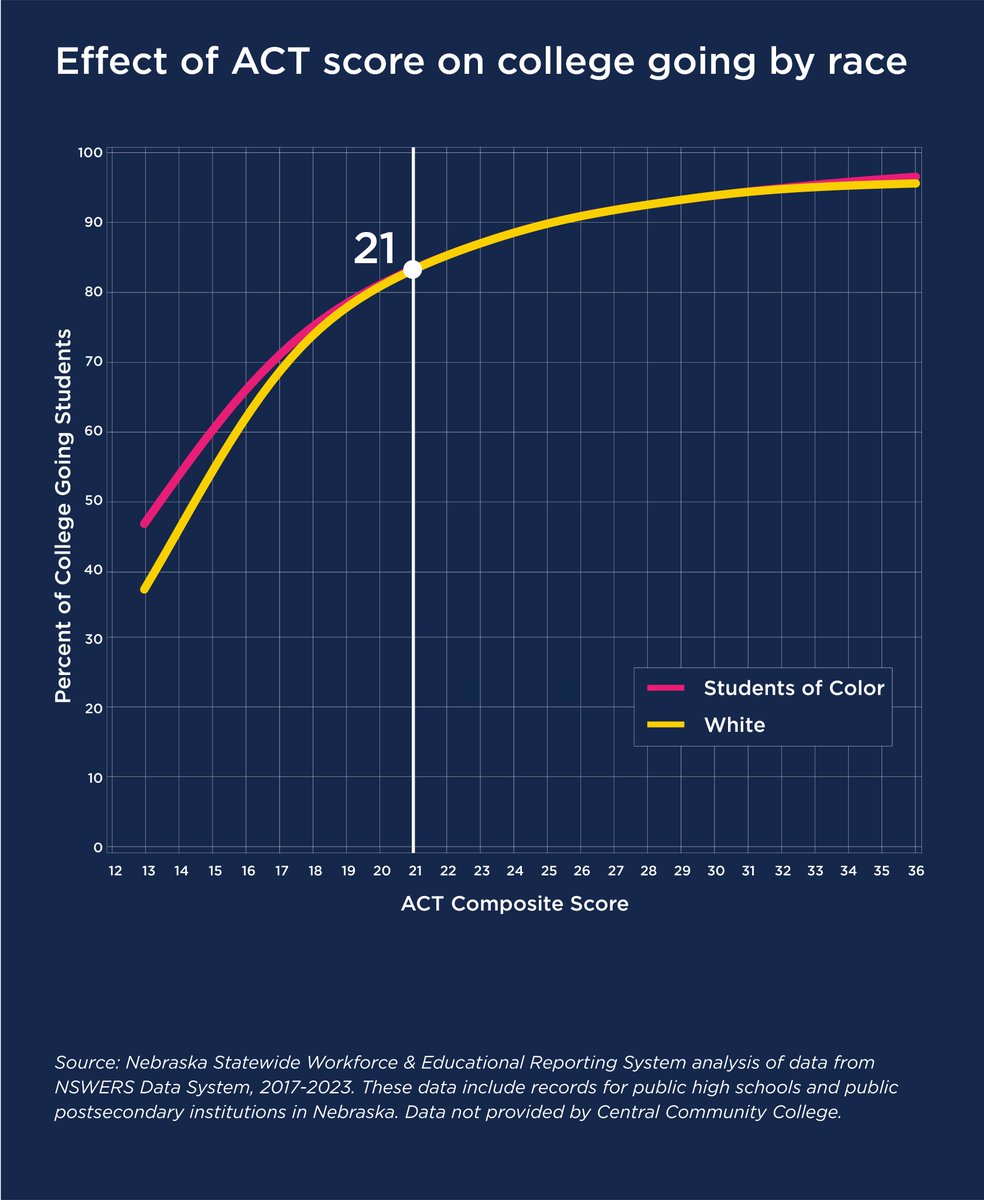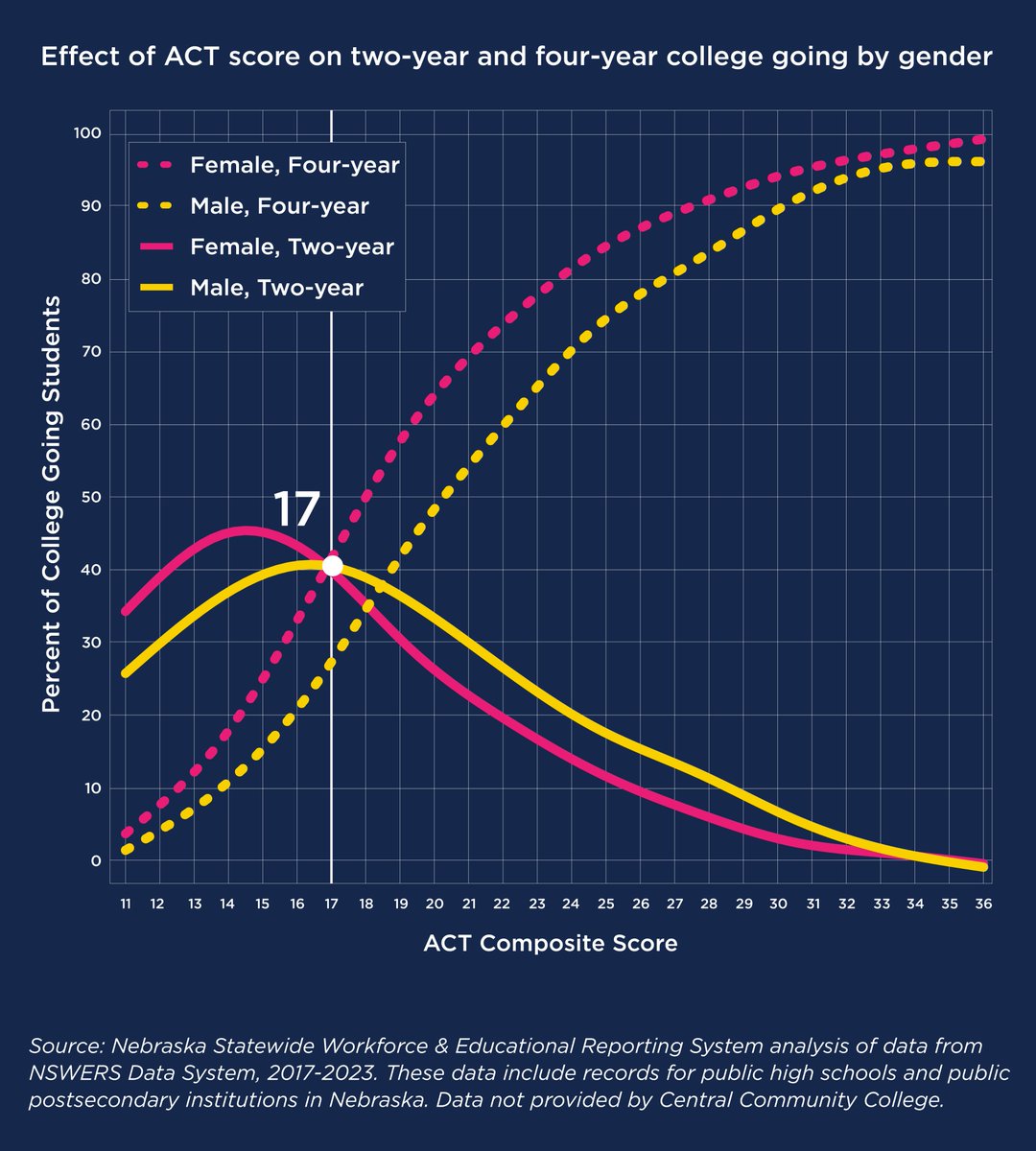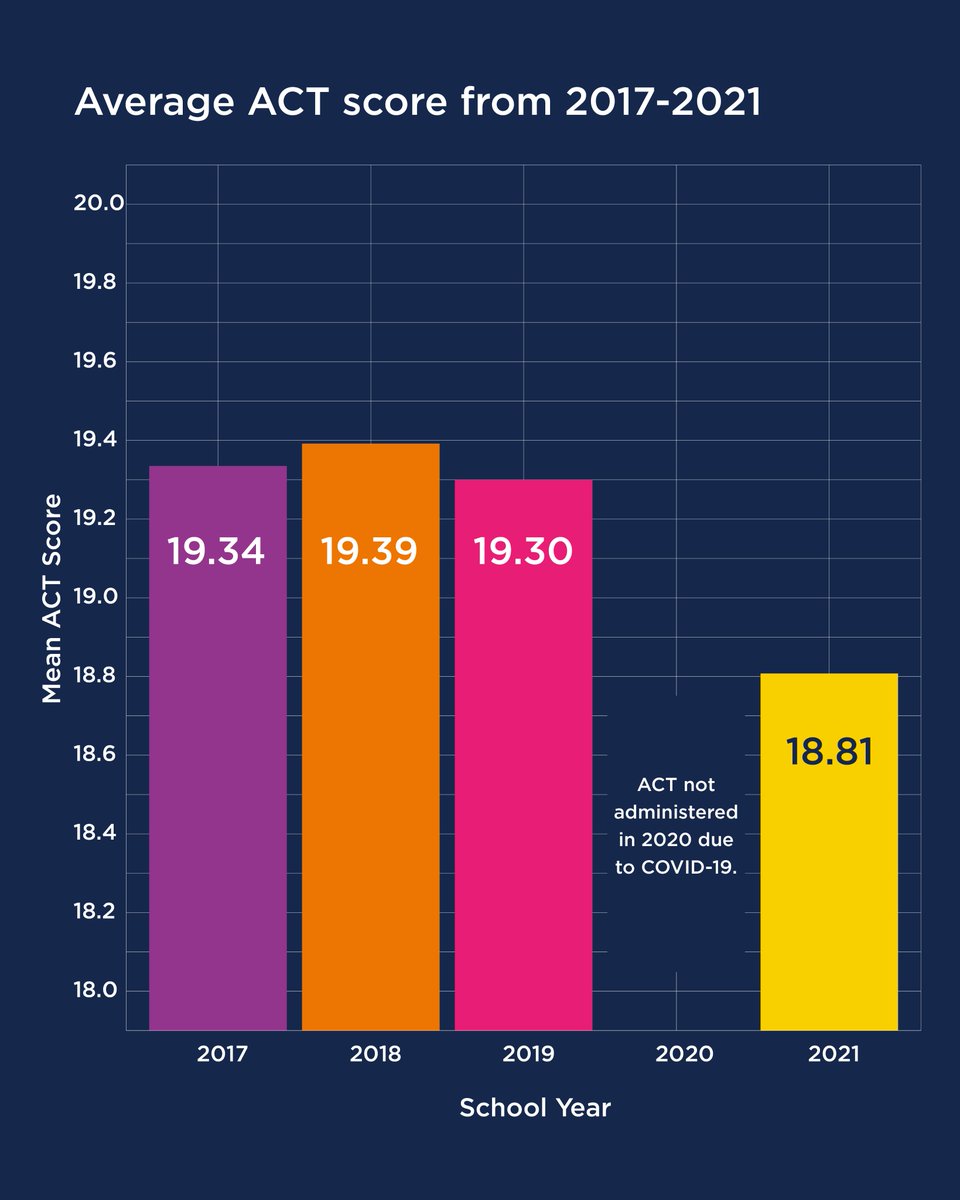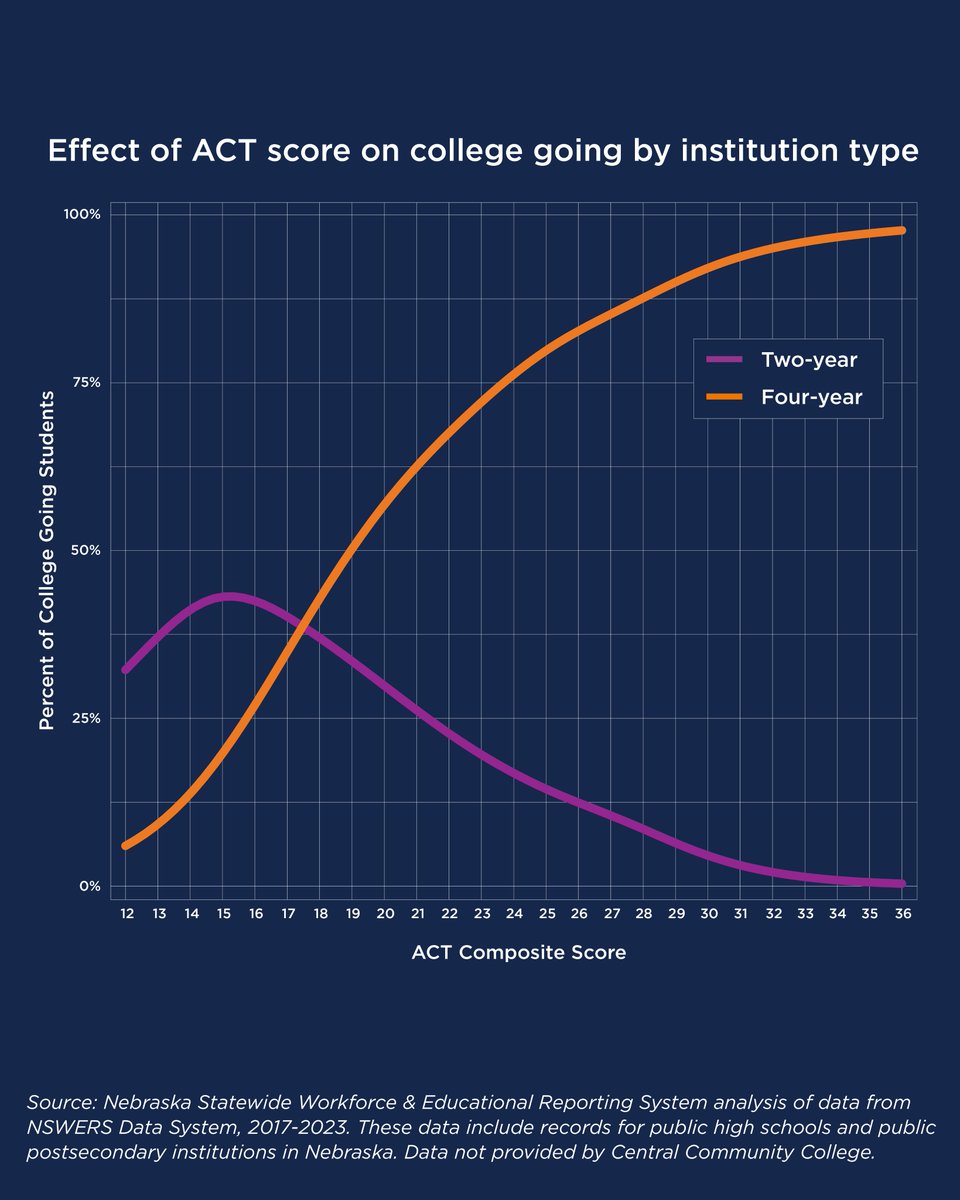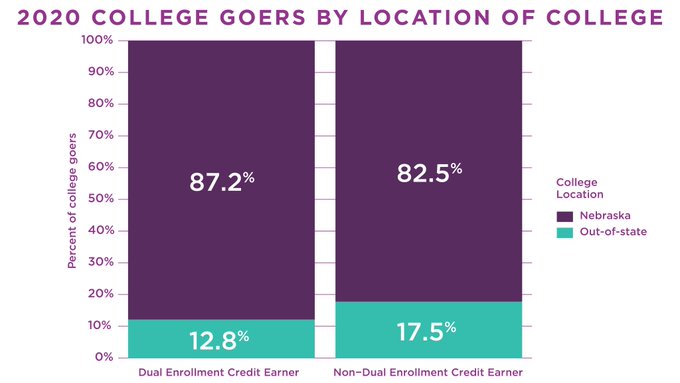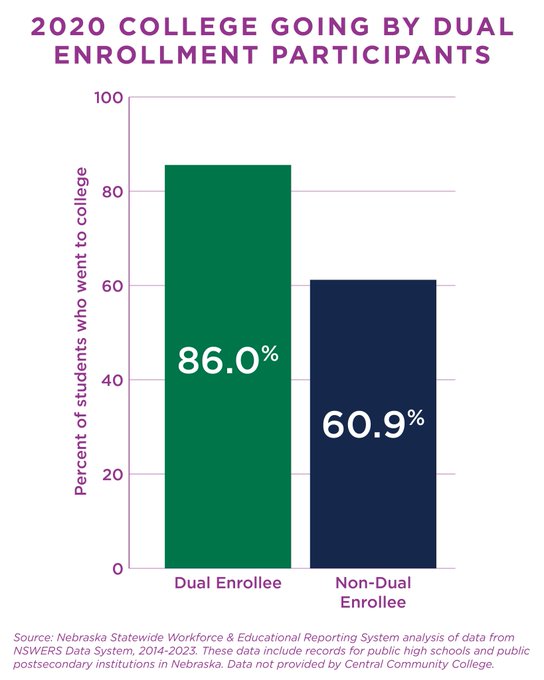2025 Chronic Absenteeism College Going
A gap in college going exists between chronic absentees & their peers, where 70.9% of graduates who regularly attend school enroll in a postsecondary institution compared to 48.7% of chronically-absent peers. To learn more, visit:...
Causal Effect of Dual Enrollment Participation on Postsecondary Graduation 2025
Dual enrollment participants in Nebraska are 13 percentage points more likely to attain a postsecondary degree within six years of high school graduation than those who do not participate. Read more about dual enrollment in Nebraska:...
Causal Effect of Dual Enrollment Participation on Nebraska Four-year Postsecondary Persistence 2025
At four-year Nebraska-based institutions, college persistence rates were four percentage points higher for those who participated in dual enrollment than those who did not. Learn more about dual enrollment in Nebraska:...
Causal Effect of Dual Enrollment Participation on Nebraska Two-Year Postsecondary Persistence 2025
College persistence rates are greater at Nebraska-based institutions for those who participated in dual enrollment than those who did not. In fact, 9 percentage points higher at two-year colleges! Read more:...
Causal Effect of Dual Enrollment Participation on College Going 2025
Nebraska dual enrollment participants are 10 percentage points more likely to enroll in college within 16 months of high school graduation than those who do not participate. Read more about dual enrollment in Nebraska:...
Causal Effect of Dual Enrollment Participation on High School Graduation 2025
Dual enrollment participants in Nebraska are four percentage points more likely to graduate high school on time than non-participants. Read more about dual enrollment in Nebraska: https://insights.nswers.org/special-report/2025-dual-enrollment.pdf.
Dual Enrollment Participation by Gender 2025
Female students are more likely to participate in dual enrollment in Nebraska than male students (56% versus 44%) and this gender gap continues over time. Read more about dual enrollment in Nebraska: https://insights.nswers.org/special-report/2025-dual-enrollment.pdf.
Dual Enrollment Credit Earners by Race/Ethnicity 2025
White students had the highest dual enrollment participation rate in Nebraska (over 35%), while Hispanic (19%) and Black students (11%) participated at lower rates. To learn more about dual enrollment in Nebraska, visit:...
Dual Enrollment by Course Type 2025
Career and Technical Education (CTE) courses make up 22% of the total courses taken by Nebraska dual enrollment participants in the 2022 cohort. Both general education & CTE courses have increased over time. Read more:...
Median First Year Postsecondary GPA Dual Enrollment 2025
First-year postsecondary college GPAs are higher among dual enrollment participants than non-participants at both two- and four-year Nebraska colleges. Read more about dual enrollment in Nebraska: https://insights.nswers.org/special-report/2025-dual-enrollment.pdf.
Dual Enrollment Median High School GPA 2025
The median high school GPA among Nebraska dual enrollment participants is 3.41, which is higher than among non-dual enrollees who earned 2.57 in the 2022 cohort. Read more about dual enrollment in Nebraska:...
2025 Dual Enrollment Credit Hours Earned
The total number of college credit hours earned by dual enrollment participants in Nebraska has climbed over time, with over 111k earned college credits in the 2022 cohort. For more on dual enrollment in Nebraska, visit:...
Average Dual Enrollment Credits Earned Per Student 2025
On average, Nebraska dual enrollment participants in the 2022 cohort earned 12.3 semester hours while in high school, equivalent to one full-time semester of college. This marks an increase from 8.9 semester hours in the 2016 cohort. Read more:...
Nebraska High School Cohort, Participants, & Earners
Dual enrollment participation in Nebraska has increased significantly over time. In the 2022 cohort, 33% of students participated, up from 26% in the 2016 cohort. Read more about dual enrollment in Nebraska:...
58% of Nebraska public students
58% of #Nebraska public students who had below standard third grade reading levels achieved reading proficiency by 7th grade, compared to 93% of students who met standards and 99% of students who exceeded standards. View the reading brief here:...
77% of third graders achieve reading scores
Did you know that 77% of third graders achieve reading scores on the #Nebraska state assessment that meet or exceed #reading standards? Read more about what happens later in their academic journey here:...
Students with better reading skills in 3rd grade
Students with better reading skills in 3rd grade are more likely to go to college. In 2021, Nebraska students went to college at rates of 86% if they exceeded 3rd grade reading standards, 73% if they met standards & just 53% if they were below. Read more:...
Effect of ACT score on public versus private college going
National trends show that about 70% of college students attend public institutions versus 30% to private institutions. This trend is also true in #Nebraska where the majority of college students attend public institutions, across ACT scores. More here:...
Effect of ACT score on college going by race.
At the same #ACT score, Nebraska students of color are slightly more likely to attend college than their white counterparts. This difference, however, tends to level off for ACT scores above 21. Read the scrollytelly story here:...
Effect of ACT score on two-year and four-year college going by gender
For Nebraska public students with an ACT score above 17, male students tend to choose 2-year colleges more than female students. In contrast, female students with similar scores are more likely to choose 4-year institutions. Read more:...
Average ACT Score from 2017-2021
In the wake of COVID19, ACT scores saw a noticeable drop in NE. This decline in scores highlights the disruption experienced by students & isn't just about numbers—it has major effects on college admissions & the education pathways of students. Read more:...
Effect of ACT Score on college going by institution type
ACT scores impact the college choices of Nebraska high school students. The higher a student's ACT score, the more likely they are to pursue higher education. Yet, the type of institution they choose–2-year or 4-year–can vary based on scores. Read more:...
2020 College Goers by Location of College
Nebraska dual enrollment credit earners are more likely to attend college in Nebraska (over 87 percent) than non-dual enrollment credit earners in the state (over 82 percent). To view the full report visit:...
2020 College Going by Dual Enrollment Participants
Students who participate in dual enrollment go to college at higher rates than those who do not participate, with 86 percent versus almost 61 percent college-going rates across the two groups. Nebraska's full dual report can be found here:...

